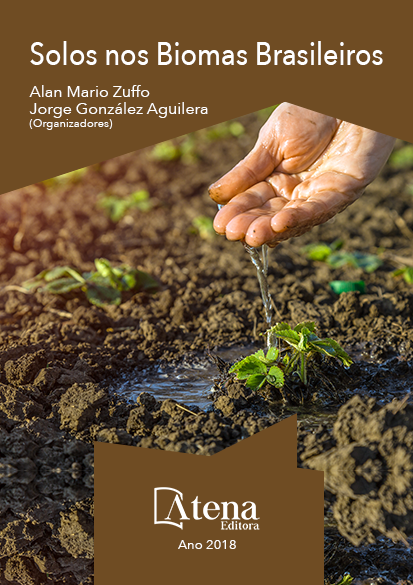
AVALIAÇÃO DAS RESPOSTAS DE TRÊS CULTIVARES DE ARROZ (Oryza sativa) SUBMETIDAS A DIFERENTES DOSES DE AMÔNIO
O amônio é uma fonte inorgânica
de nitrogênio muito importante para o
desenvolvimento das plantas, porém em faixas
de concentrações milimolares pode causar
toxidez, uma vez que nessas faixas as raízes
preferem captar o amônio em detrimento ao
nitrato. Uma das grandes vantagens do uso
de fontes amoniacais para as plantas é a
diminuição no gasto energético, uma vez que o
amônio ao ser absorvido já se encontra em uma
forma prontamente assimilável, ao contrário
do nitrato que necessita de um gasto de oito
elétrons para ser reduzido a amônio e poder ser
assimilado. O objetivo do trabalho foi avaliar o
comportamento de três variedades de arroz
(Oryza sativa L.), duas variedades nativas do
Maranhão (Manteiga e Piauí) e a variedade
(IAC-47) em diferentes concentrações de NH4
+
(0,2 mM de NH4
+ (trat 1), 1 mM de NH4
+ (trat 2)
e 1 mM de NH4
+ com privação de N e posterior
ressuprimento (trat 3)). Foi possível verificar
que as variedades Maranhenses, quando
comparadas a variedade IAC-47, apresentaram
maiores teores de amônio nas bainhas e nas
folhas nos tratamentos 2 e 3, e aminoácidos
livres nessas mesmas partes para o tratamento
3. Esse maior teor de amônio e aminoácidos
livres relatado nas variedades maranhenses no
tratamento 3 foi acompanhado de uma maior
atividade da GS nas raízes e folhas, sugerindo
que essas variedades possuem uma maior
capacidade de absorver o N-NH4
+ aplicado no
solo e de remobilizar este nutriente em ocasiões
que se faça necessário, colaborando para a
diminuição de perdas ambientais.
AVALIAÇÃO DAS RESPOSTAS DE TRÊS CULTIVARES DE ARROZ (Oryza sativa) SUBMETIDAS A DIFERENTES DOSES DE AMÔNIO
-
DOI: 10.22533/at.ed.0871814126
-
Palavras-chave: Toxidez, Manteiga, Piauí.
-
Keywords: Toxicity, Manteiga, Piauí.
-
Abstract:
Ammonium is an inorganic source
of nitrogen very important for the development of
plants, but in bands of millimolar concentrations can cause toxicity, since in these bands the roots prefer to capture ammonium instead
of nitrate. One of the great advantages of the use of ammoniacal sources for plants is
the reduction in the energy expenditure, since the ammonium to be absorbed is already
in a form readily assimilable, unlike the nitrate that needs an expense of eight electrons
to be reduced to ammonia and can be assimilated. The objective of this work was to
evaluate the behavior of three rice varieties (Oryza sativa L.), two native varieties of
Maranhão (Manteiga and Piauí) and variety (IAC-47) in different NH4
+ concentrations
(0.2 mM NH4
+ (trat 1), 1 mM NH4
+ (trat 2) and 1 mM NH4
+ with N deprivation and
subsequent resupure (trat 3). It was possible to verify that the Maranhenses varieties,
when compared to the IAC-47 variety, had higher levels of ammonium in the sheaths
and leaves in the treatments 2 and 3, and free amino acids in the same parts for the
treatment 3. This higher ammonium and amino acids content free yields reported in
the Maranhão varieties in treatment 3 was accompanied by a higher GS activity in the
roots and leaves, suggesting that these varieties have a greater capacity to absorb the
N-NH4
+ applied to the soil and to remobilize this nutrient in occasions that is necessary,
contributing to the reduction of environmental losses.
-
Número de páginas: 15
- Erinaldo Gomes Pereira


